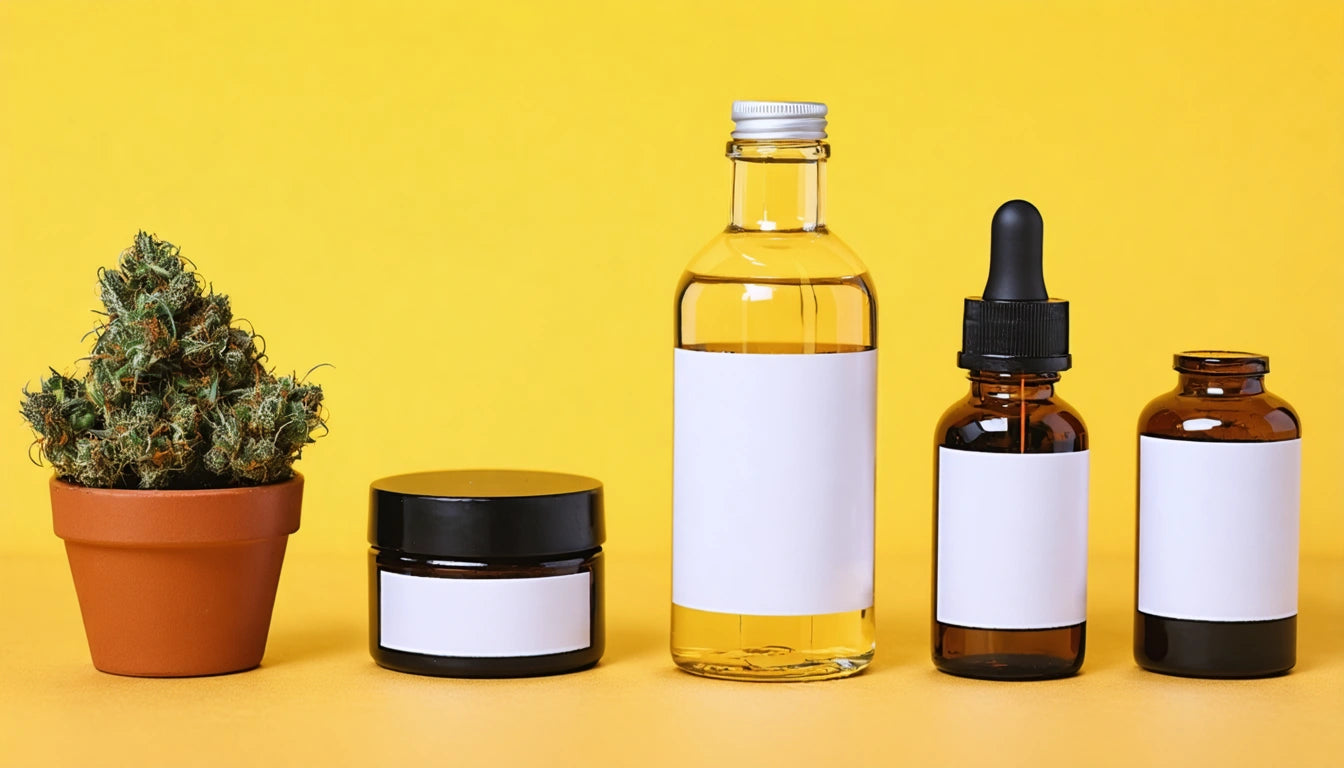Table of Contents
For cannabis brands seeking custom packaging, understanding minimum order quantities (MOQs) is essential for effective budget planning. MOQs directly influence unit costs, production timelines, and overall packaging strategy. This guide explores how MOQs affect your bottom line and provides practical approaches to manage these requirements efficiently.
Understanding MOQ in Cannabis Packaging
Minimum order quantities represent the smallest number of units a manufacturer will produce in a single run. These minimums exist because setup costs for custom packaging are substantial, including plate creation, machine calibration, and material preparation. By requiring larger orders, manufacturers distribute these fixed costs across more units.
According to our research on packaging costs, cannabis industry MOQs typically range from 1,000 to 10,000 units for custom printed packaging, with premium options often requiring higher minimums.
Why MOQs Exist in Packaging Production
Manufacturers establish MOQs to ensure production efficiency and profitability. The economics of custom packaging depend on scale, with setup representing a significant portion of total costs. For specialized cannabis packaging that requires child-resistant features or compliance elements, these setup processes become even more complex.
Key Cost Factors Influenced by Minimum Order Quantities
Several variables determine how MOQs affect your packaging budget:
- Production method (digital vs. offset printing)
- Material selection and quality
- Finishing techniques (embossing, foil stamping, spot UV)
- Structural complexity and die-cutting requirements
- Compliance features (child-resistant mechanisms)
Digital printing typically offers lower MOQs than traditional offset printing, making it suitable for smaller cannabis brands or limited edition runs. However, as this article on premium finishes explains, specialized embellishments often require higher minimums due to their complex setup processes.
The Scale Economy Effect
The relationship between order size and unit cost follows a curve of diminishing returns. While increasing from 1,000 to 5,000 units might reduce per-unit costs by 40-60%, the savings from 5,000 to 10,000 units might only yield an additional 10-20% reduction. When planning inventory, we recommend using precise measurement tools like digital scales for accurate inventory management to help determine optimal order quantities based on your actual usage rates.
Balancing MOQ Requirements with Business Needs
Finding the sweet spot between meeting MOQs and avoiding excess inventory requires careful consideration of:
Cash Flow Management
While larger orders reduce unit costs, they require more upfront capital. For startups or smaller operations, this can create cash flow challenges. Some manufacturers offer payment terms or split deliveries to help manage this burden.
Storage Considerations
Larger orders require more storage space. Cannabis businesses must factor in warehousing costs and consider potential degradation of packaging materials over time, especially for items with specialized coatings or finishes.
Product Lifecycle Planning
Packaging needs may change due to regulatory updates, brand refreshes, or product modifications. Seasonal and limited edition packaging presents particular challenges, as these designs have shorter lifespans but still face standard MOQ requirements.
Strategies for Optimizing MOQ Costs
Several approaches can help cannabis brands navigate MOQ requirements effectively:
Stock Packaging with Custom Labels
Consider using stock packaging options with custom labels or sleeves. This hybrid approach typically has lower MOQs while still providing brand differentiation. As discussed in our guide on brand differentiation, strategic labeling can still create distinctive shelf presence.
Modular Packaging Systems
Develop a packaging system with common base components and variable elements. For example, use the same container across product lines but vary the labels or inserts. This approach allows you to meet higher MOQs on base components while maintaining flexibility.
Collaborative Purchasing
Partner with complementary brands to share MOQ requirements. This works particularly well for seasonal promotions or event-specific packaging, where multiple brands can utilize similar structural designs with different graphics.
Prototype Testing
Before committing to large orders, invest in proper prototyping. As explained in this article on packaging prototypes, thorough testing helps avoid costly mistakes that might require reordering.
Future Planning: Scaling Your Packaging Strategy as You Grow
As your cannabis brand expands, your approach to MOQs should evolve accordingly. New brands might start with higher-cost, lower-MOQ options, then transition to more economical large-run packaging as sales volumes increase. This progression allows for testing market response before major investments.
When evaluating packaging partners, consider their flexibility in scaling MOQs as your needs change. Some suppliers offer graduated pricing tiers that reward growth without requiring massive jumps in order quantities. The most valuable partners will help you balance immediate budget constraints with long-term packaging strategy.
By understanding the mechanics behind MOQs and implementing strategic approaches to manage them, cannabis brands can achieve the ideal balance between cost efficiency and operational flexibility, ultimately creating packaging that serves both brand objectives and business realities.











Leave a comment
All comments are moderated before being published.
This site is protected by hCaptcha and the hCaptcha Privacy Policy and Terms of Service apply.